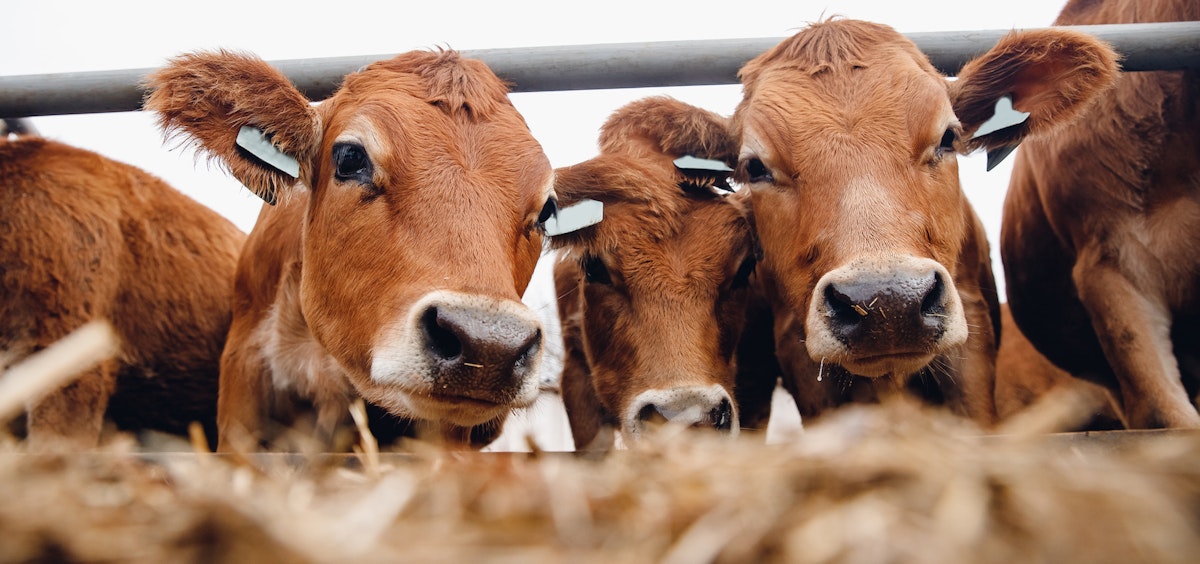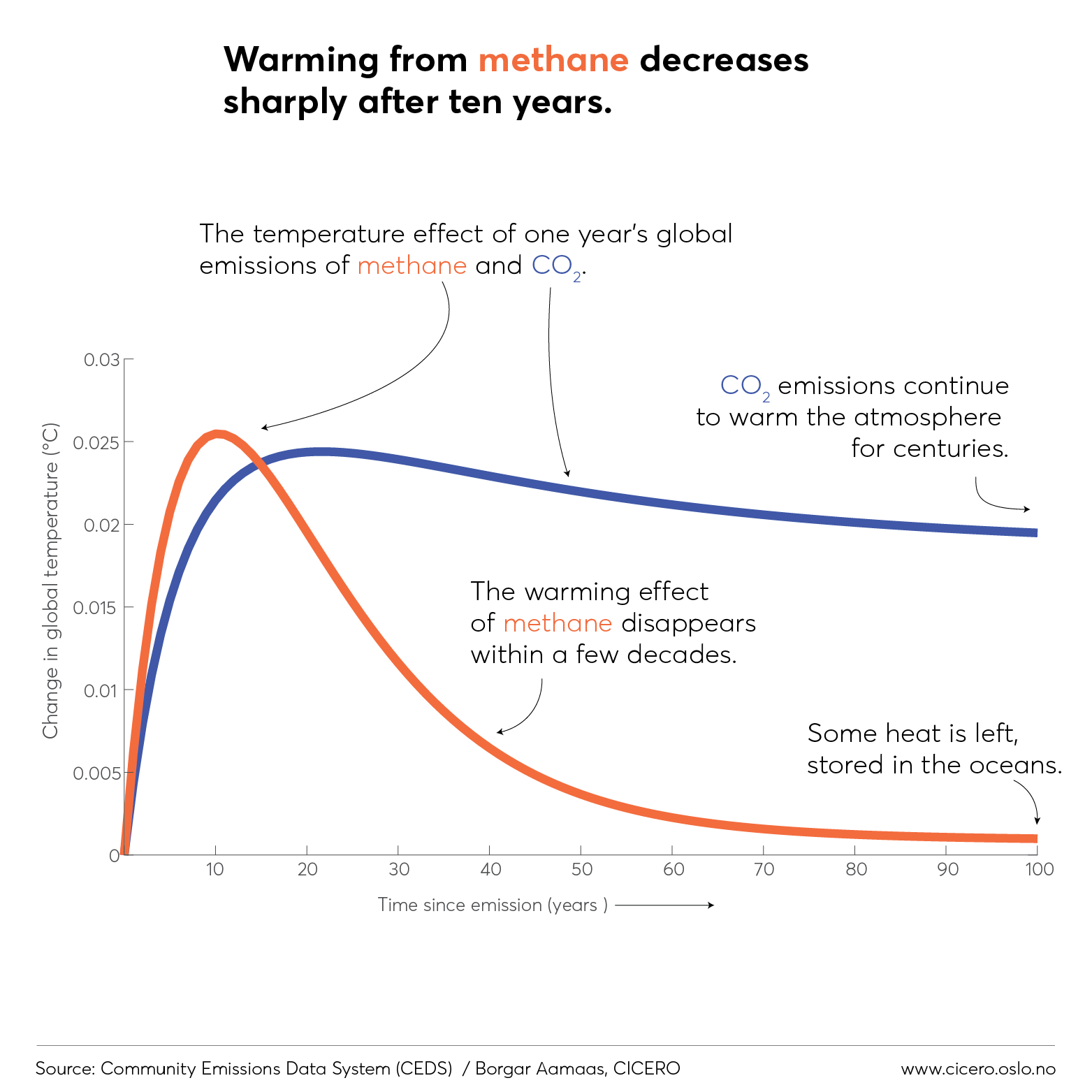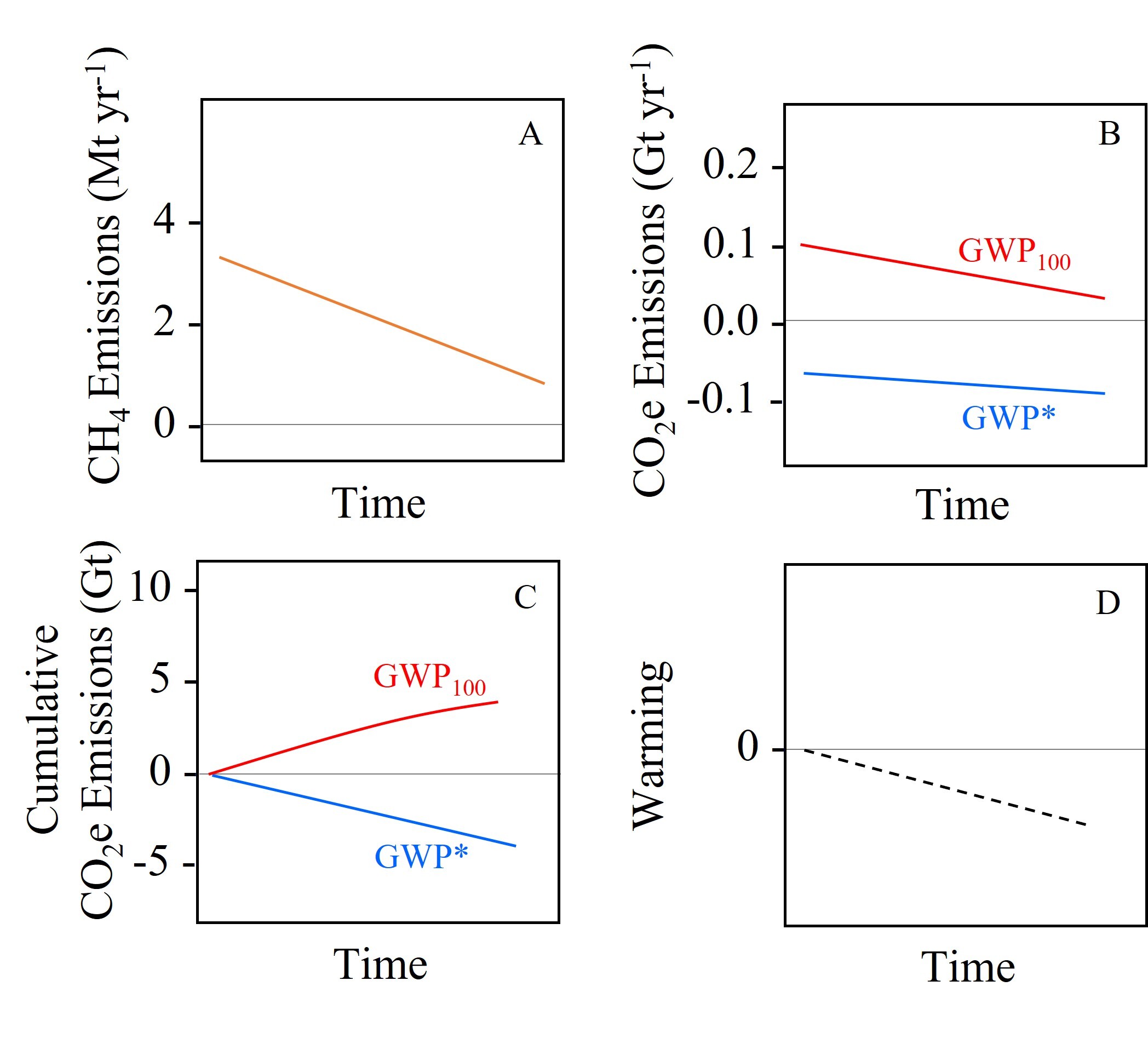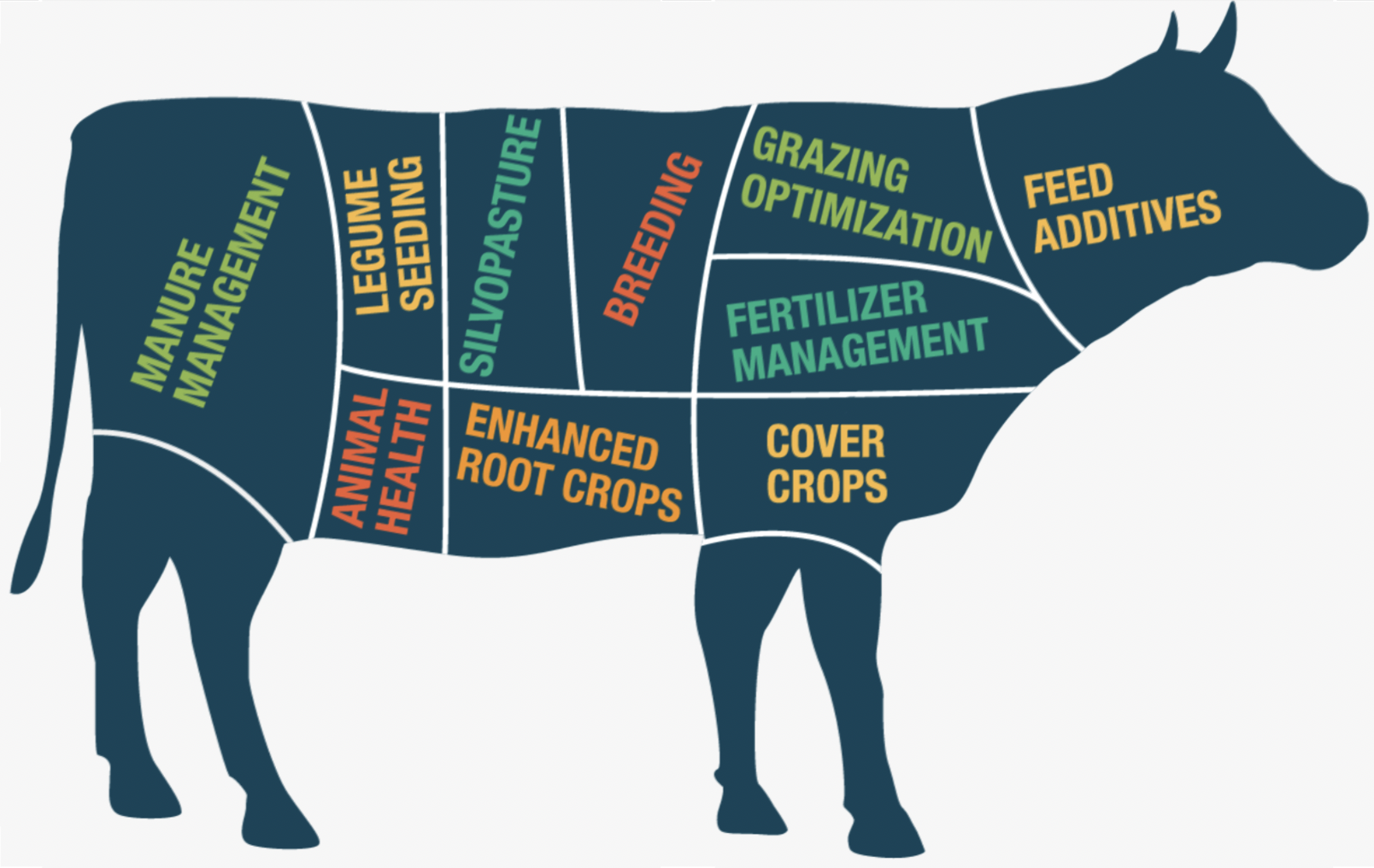Livestock Don’t Contribute 14.5% of Global Greenhouse Gas Emissions
The total is far less certain. But reducing their emissions is more important than ever

-
-
Share
-
Share via Twitter -
Share via Facebook -
Share via Email
-
In 2013, the Food and Agriculture Organization of the United Nations estimated that livestock production accounted for 14.5% of global greenhouse gas emissions. Though the analysis was based on data from 2004 and 2005—over 15 years ago—it remains the most widely cited estimate of livestock’s global carbon footprint and is often deployed with an air of certainty. For example, even in 2023, a CNN article made waves by noting that “livestock farming accounts for 14.5% of human-caused, planet-warming emissions.”
More recent data and science indicate that livestock may contribute a wider range of emissions, potentially more, potentially less. For its part, the Food and Agriculture Organization of the United Nations has released a new, lower estimate that livestock produce 12% of global greenhouse gas emissions. Peer-reviewed studies have put the figure higher, at up to 19.6% of emissions.
Whether livestock’s true carbon footprint is on the lower or upper end of this range, reducing livestock emissions is more important than ever. Research shows that doing so would come with even larger climate benefits than previously imagined.

How do livestock contribute to climate change?
Sources of greenhouse gas emissions from livestock production include:
Enteric fermentation: The regular digestive process of ruminants such as cattle and sheep produces methane. Despite common references to cow farts, over 90% of enteric methane from cattle is emitted through burping. It is the largest source of livestock emissions.
Manure: Solid waste produces both methane and nitrous oxide. Different systems for manure management generate different levels of emissions, with methane emissions typically highest when manure is stored in liquid systems such as manure lagoons.
Feed production: Manufacturing fertilizers and other farm inputs emits carbon dioxide, and fertilizing crops generates nitrous oxide emissions. There is also a small amount of emissions related to transporting and processing feed.
Land use change: Expansion of pasture for grazing animals and cropland for growing feed crops results in conversion of forest, grassland, and other land, emitting carbon dioxide stores in biomass and soils.
Energy: Energy is used not only to produce farm inputs and feed, but also directly in animal production for ventilation, cooling, and other activities.
Processing: Emissions related to slaughtering livestock and processing and packing the meat for consumers extends beyond the “farm gate”—it isn’t a key component of raising livestock per se—but it is included in most global estimates.
Why is there a wide range of estimates of greenhouse gas emissions from livestock?
There is a wide range of estimates due, in part, to three factors: the year(s) the estimate was made for, what sources of greenhouse gas emissions were included, and the approach used to convert emissions of different greenhouse gasses that each affect the climate differently into a single metric. Emissions of some greenhouse gasses such as methane and nitrous oxide trap more heat per molecule than carbon dioxide, for example, and thus have a larger warming impact. To estimate livestock’s carbon footprint, researchers typically multiply emissions of each gas by their global warming potential over 100 years (GWP-100) in order to calculate emissions in a common metric of carbon dioxide-equivalent (CO2e).
Over time, climate scientists have updated their estimates of the global warming potential of different gasses. In turn, estimates have changed over time. For example, in their 2006 report Livestock’s Long Shadow, the UN Food and Agriculture Organization (FAO) originally estimated livestock emissions for 2001-2004 as around 17.8% of the world total. That figure was revised to 14.5% in the 2013 report, Tackling Climate Change through Livestock, which estimated livestock emissions for 2005. Both estimates used older GWP-100 values, from the third and fourth reports of the Intergovernmental Panel on Climate Change (IPCC) reports, respectively. Compared to its first report, FAO’s 2013 report also added in several more emissions sources, such as farm buildings, and used more refined parameters and methods.
Estimates for livestock emissions in 2010 are generally higher than for the years that came before. A later assessment by FAO estimated that livestock production emitted 8.1 gigatons of carbon dioxide-equivalent that year—equivalent to 15.6% of total global emissions. In an independent 2018 study, researchers Joseph Poore and Thomas Nemecek used different methods to estimate that livestock production circa 2010 accounted for a similar portion of global emissions, about 15%.
The high-end of estimates got even higher as research advanced. In 2021, Xiaoming Xu and other researchers at Illinois State University and FAO estimated that livestock had actually accounted for about 19.6% of global greenhouse gas emissions in 2010. Figures calculated as the sum of all emissions for animal-based foods and emissions from land-use change for grazing land, grazing land carbon dioxide and nitrous oxide, enteric fermentation, and manure management for “other utilizations” such as wool, leather, and other products. Excluding “other utilizations” reduces estimates to 19.2% and 15.8% when including and excluding carbon dioxide from grazing land, respectively. Xu et al (2021) used a new, more comprehensive method, integrating biogeochemical modeling with existing estimates from FAO. Unlike other studies, they found that more carbon dioxide—not just methane and nitrous oxide—is released from livestock production than is sequestered in vegetation and soil through pasture, rangeland, and feed crops. These sources of carbon dioxide include soil and livestock respiration, tillage, and manure among others. Other studies typically ignore these sources, assuming that emissions are balanced out by carbon sequestration.
Even with all the advancements in how emissions are measured, there is still scientific disagreement about net CO2 emissions from grazing land. Chang et al (2021) estimated that grasslands managed for livestock actually are a net sink of carbon dioxide at a global level, sequestering more than is released. Other research has found similar results at the country- or regional-level. For example, some studies have posited that grassland in the United States sequesters about 0.2 gigatons CO2 per year, equivalent to about 3% of total U.S. greenhouse gas emissions in 2019. Yet, even omitting CO2 emissions from grassland, the Illinois/FAO study estimates that livestock still generated about 16.1% of global greenhouse gas emissions.
Many groups have taken to citing these higher estimates of livestock emissions as fact. For instance, Humane Society International notes that “animal agriculture is responsible for at least 16.5% of global greenhouse gas emissions.” But such statements ignore the uncertainty and wide range of estimates that still remains. Beyond disagreements about the highest-end estimates, there is also disagreement at the lower end. The studies above all used old GWP-100 values, which can significantly inflate estimates. Specifically, they used GWP-100 values of 34 for methane and 298 for nitrous oxide in their calculations. However, the latest IPCC report—published after these studies—proposes using lower values: 27.2 for methane from non-fossil fuel sources and 273 for nitrous oxide. Converting the estimates from Xu et al. (2021) using these lower values, provides estimates that livestock account for 14.0% to 17.3% of global emissions, depending on whether CO2 emissions from grazing land are included.
FAO’s most recent estimate, released in 2022, uses the lower values and concludes that in 2015—five years more recently than other estimates—livestock production generated 6.2 billion metric tons CO2e, or 12% of total global emissions. We calculate that 6.18 Gt CO2-eq is 10.9% of the 56.57 Gt CO2-eq reported in the IPCC Data Distribution Centre as of March 6, 2023. FAO’s analysis, however, has several limitations and uncertainties. Notably, it could be an under- or overestimate depending on whether grassland managed for livestock production is a net source of emissions, as Xu et al. (2021) contend, or a net sink. FAO also estimates that livestock production resulted in about one-third as much deforestation and land-use change as Xu et al. (2021) had found, albeit for different time periods. And several studies suggest that FAO and other conventional estimates of methane emissions from intensive animal operations are underestimated, matching poorly with atmospheric observations of methane.
In short, livestock production appears to contribute about 12%–17% of global greenhouse gas emissions, when using the most recent GWP-100 values, though there remains great uncertainty in much of the underlying data such as methane emissions from enteric fermentation, CO2 emissions from grazing land, or land-use change caused by animal agriculture.
Are Livestock Greenhouse Gas Emissions Increasing or Falling?
Although FAO’s latest estimate of global livestock emissions is lower than previous ones, this does not indicate that emissions have been falling. FAO cautions that, due to methodological differences, their latest estimate of livestock’s carbon footprint is not comparable to their previous estimates.
In fact, other data from FAO indicates that emissions from livestock are rising. FAO reports that emissions from enteric methane and manure Including manure management, manure left on pasture, and manure applied to crops. rose 4% and 5%, respectively from 2015 to 2020.
Emissions from livestock production are expected to continue rising as the global population nears 10 billion by midcentury and diets shift to incorporate more meat. (Consumption of meat from ruminant animals like cattle is expected to increase by about 90% by 2050.) If current trends for food demand and production continue, emissions from the food system alone would likely push global warming beyond 1.5° C, even if all non-food system emissions were immediately eliminated. Consumption of dairy and meat, particularly from cattle, is expected to account for over half of future warming associated with the food system, with emissions from meat production alone contributing 0.2–0.44°C of warming by the end of the century.

GWP*: A New Approach To Assessing Methane’s Warming Impact?
Although conventional GWP values provide a simple approach to estimating the impact of a single year's emissions on warming, they can provide a misleading impression when applied to emissions over time. CO2 and methane have very different lifetimes. When CO2 is emitted into the atmosphere, a portion of it breaks down quickly, but around 40% remains after a century. Methane, which has a larger impact on temperatures, has a much shorter atmospheric lifetime of about 12 years. In other words, a ton of methane released today will contribute more to warming than a ton of CO2, but its impact will rapidly decline over time. Traditional GWPs do not capture these dynamics.
As the IPCC 6th Assessment Report notes, a new approach to calculating warming impact, GWP*, more accurately represents the warming impact of methane. Its use enables better comparison and aggregation of “warming equivalents” from carbon dioxide, methane, and other greenhouse gasses than the conventionally used CO2-equivalents.
Compared to calculations made with GWP-100, those made with GWP* lead to smaller estimates of methane’s contribution to warming, whether methane emissions are assumed to be declining, steady, increasing at a linear rate, or increasing at a rate of less than 1% per year. Conversely, it leads to larger estimates of warming than GWP-100 when methane emissions are increasing exponentially at a rate greater than 1% per year.
What Does GWP* Mean for Livestock Emissions?
Since GWP* values depend on the rate of change over time in emissions, calculating livestock’s contributions to warming using GWP* can indicate that livestock contribute more or less to warming than conventional GWP-100 metrics suggest. Converting estimates from Xu et al. (2021) to GWP*, for example, show animal agriculture as contributing 6.0-7.8 billion tons of CO2-warming equivalent in 2010 (or 13.6% to 17.6% of global emissions), depending on whether CO2 emissions from grazing land are included. Similarly, converting FAO’s most recent estimates into GWP* indicates that livestock contributed 5.0 billion tons of CO2-warming equivalent in 2015,GWP* is calculated based on change over time in emissions. Therefore, this value is calculated based on change in methane emissions over 20 years from 1995 to 2015. about 8.9% of global emissions in CO2-warming equivalents. These estimates are lower than with conventional GWP-100 metrics since methane emissions from livestock have been increasing at a rate of less than 1% per year.
Counterintuitively, using GWP* also indicates that reducing methane emissions would have greater climate benefits than conventionally assumed. To understand this, assume that methane emissions have historically been at a high level and that those methane emissions then start to decrease. Temperatures would soon start to fall as well. This is accurately represented by GWP*, as shown in the figure below. Using GWP-100, on the other hand, to estimate the effect of falling methane emissions would indicate that warming is continuing, just at a slower rate than before. In other words, standard GWP metrics underestimate how much reducing methane emissions would help stabilize the climate.
GWP* More Accurately Represents the Effect of Declining Methane Emissions on Warming
(A) Methane emissions in megatonnes (Mt) per year, (B) CO2 equivalent and warming equivalent emissions with GWP-100 (red) and GWP* (blue) in gigatonnes (Gt) per year, (C) cumulative CO2 equivalent and warming equivalent emissions using GWP-100 (red) and GWP* (blue), and (D) warming change resulting from the declining methane emissions.

If global livestock enteric methane emissions are cut in half from 2019 to 2039—as might be possible through improved breeding, using feed additives, and other practices—about 6.4 gigatons of CO2-warming equivalent would be eliminated, 4.5x larger than the effect calculated using conventional GWP-100 values.
Despite more accurately representing methane’s warming impact over time, and potentially more accurately capturing the progress that can be made by addressing livestock emissions, the sixth IPCC report cautions that GWP* is not inherently better to use in decision-making than other warming metrics. Climate scientists and climate policy researchers like Joeri Rogelj and Malte Meinshausen have argued that GWP* does not meet the needed criteria established for a target-setting metric and creates equity concerns. For instance, if a country with little cattle production increases production, it’s warming impact under the GWP* model could be larger than that of a country that has had large-scale production and methane emissions for decades, as long as the latter country’s emissions are steady or declining. Similarly, a country, company’s, or other entity’s current GWP* emissions do not reflect its responsibility for past emissions—or its ability to reduce emissions in the future. In the same way that the largest historical CO2 emitters have a responsibility to reduce emissions as much as possible, arguably the largest historical emitters of methane do too since their emissions sustain elevated temperatures, as the developers of the GWP* model themselves have noted.
Regardless of GWP*s ability to be used in policy design, it shows how studies that use conventional GWP metrics underestimate the climate benefit of reducing livestock methane emissions.
How to reduce livestock emissions
There are a variety of pathways to reduce livestock emissions without affecting food security or the income of the hundreds of millions of people who rely on livestock for their livelihood. While carbon dioxide emissions from human activities, the IPCC has stated, must be reduced to zero or low enough that carbon removal balances out any emissions in order to halt global warming, methane emissions do not need to be eliminated. They still should be reduced, though, and attaining some of the most ambitious climate targets would likely require cutting them to at least 35% below 2010 levels.
Given that enteric methane is the largest source of livestock emissions, efforts to mitigate its production are a crucial strategy to halt warming. Development and adoption of technologies and practices like methane-reducing feed additives and selectively breeding low-methane cattle could substantially cut enteric methane emissions by about 19% by 2030 and by even more in the longer term or if breakthroughs in technology and management occur quickly.
How to Cut Beef’s Carbon Footprint

Feed additives like red seaweed (e.g. Asparagopsis taxiformis) and 3-NOP have proven effective in knocking down enteric methane emissions when fed regularly as part of an animal's diet. But, to enhance their impact, slow release technologies need to be developed to ensure farmer adoption and implementation in grazing systems. Continued research efforts to increase beef and dairy animal productivity through genetic selection and nutrition can also reduce the number of cattle needed to meet forecasted growing animal protein demand, subsequently decreasing the methane emissions per pound of beef or gallon milk.
Another priority is to reduce CO2 emissions related to land-use change, limiting conversion of forest to pasture or cropland for growing feed crops. The World Resources Institute estimates that 45 million hectares of forest—about the size of Canada—was converted to pasture between 2001 and 2015. A revolution in livestock productivity—improved cattle breeding, pasture management, use of crop-based feeds, and veterinary care—combined with well-enforced land use policy would enable greater livestock production with a smaller land footprint. WRI estimates that raising livestock efficiency 25% faster than it has historically grown would reduce deforestation and other land-use change by more than 100 million hectares by 2050, compared to if efficiency grew at historical rates.
And greater amounts of meat demand should be met through alternative proteins such as plant-based meat. These have a far lower carbon footprint than beef and dairy products, the two largest sources of livestock emissions. Government support for alternative protein innovation—ranging from R&D investments to subsidized financing of facilities to procurement—can accelerate their development and adoption.
Ultimately, it’s unlikely that researchers will agree on a single estimate of livestock’s global contributions to climate change. That figure is a moving target, shifting depending on the year, the method of estimating the warming impact of methane, and many other factors. But one thing is clear: we won’t be able to avoid the worst impacts of global warming without tackling emissions from livestock.
Note: Updated April 2025 for amended FAO estimate of livestock emissions.
Methods
For our estimate of global livestock emissions using GWP*, we assumed that the change in enteric, manure and feed methane emissions from 1990 to 2010, and from 1999 to 2019 was proportional to the change in enteric and manure emissions reported by FAOSTAT. To estimate total global emissions using GWP*, we used estimates from FAOSTAT and EDGAR. We calculated CO2-warming equivalents using the equation from Smith et al. (2021) as described in IPCC AR6 WGI: "the short-lived greenhouse gas emissions are multiplied by GWP100 × 0.28 and added to the net emission increase or decrease over the previous 20 years multiplied by GWP100 x 4.24.” We used a GWP100 value of 28, as done in Cain et al. (2021).
Emissions from Poore & Nemecek (2018) exclude “retail” and are drawn from the "Results- Global Totals" sheet in Supplementary Data 2 . Emissions reported in main text from Xu et al. (2021) are calculated as the sum of all emissions for animal-based foods, except for “Transportation, trade and stock variation CO2”, and emissions from land-use change for grazing land, grazing land CO2 and N2O, enteric fermentation, and manure management for “other utilizations” such as wool and leather. All estimates include processing, upstream processes like fertilizer manufacturing, and non-retail transportation.

